The Tiling Victoria Floorex Blog
Tiling Victoria Floorex Blog
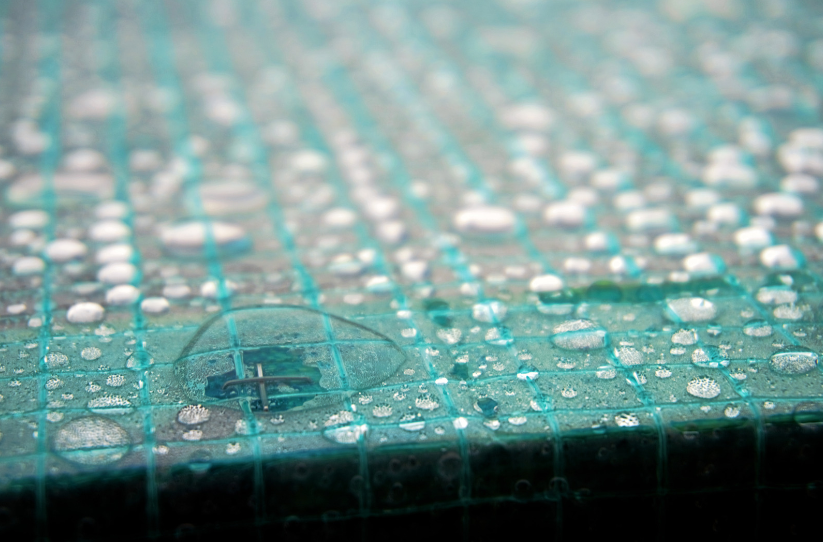
11 Mar, 2024
Living in Victoria, BC means embracing the beauty of the Pacific Northwest – lush greenery, vibrant flora, and, of course, the ever-present rain. While the region's damp climate contributes to its picturesque landscapes, it can also pose challenges for homeowners, particularly when it comes to tile maintenance. Tiles, whether used indoors or outdoors, require special care and attention to withstand Victoria's wet conditions and ensure longevity. In this post, we'll explore some essential tile maintenance tips tailored to Victoria's unique climate. Choose the Right Tiles The first step in ensuring tile longevity in Victoria's wet climate is selecting the appropriate tiles for your space. Opt for materials known for their durability and resistance to moisture, such as porcelain, ceramic, or natural stone like slate or granite. These materials are better equipped to withstand the constant exposure to rain and humidity common in Victoria. Seal Your Tiles Proper sealing is crucial for protecting tiles from moisture damage. Apply a high-quality sealant to both indoor and outdoor tiles to create a protective barrier against water penetration. Make sure to reapply sealant regularly, as it can wear off over time, especially in areas exposed to heavy rainfall or foot traffic. Practice Regular Cleaning Regular cleaning is essential for maintaining the appearance and integrity of your tiles. In Victoria's damp climate, mold, mildew, and algae growth can be common issues, particularly in outdoor areas. Use a mild detergent and water solution to clean tiles regularly, and consider investing in a pressure washer for more stubborn stains on outdoor surfaces. Additionally, be sure to sweep or vacuum indoor tiles frequently to prevent dirt and debris buildup. Pay Attention to Grout Grout is susceptible to water damage and staining, making it important to keep it well-maintained. Inspect grout lines regularly for signs of cracks, mold, or discoloration, and repair or replace any damaged grout as needed. Consider using a grout sealer to provide an extra layer of protection against moisture and stains. Control Indoor Humidity Victoria's damp climate can lead to elevated indoor humidity levels, which can contribute to mold and mildew growth on tiles and grout. Use exhaust fans in bathrooms and kitchens to vent moisture outside, and consider using a dehumidifier to maintain optimal indoor humidity levels. Proper ventilation is key to preventing moisture-related issues in tile installations. Protect Outdoor Tiles Outdoor tiles are exposed to the elements year-round, making them particularly susceptible to weather-related damage. Protect outdoor tiles by providing proper drainage to prevent water from pooling on surfaces. Use mats or rugs in high-traffic areas to minimize wear and tear, and consider installing a canopy or awning to provide additional protection from rain and UV exposure. Schedule Professional Maintenance Though there are many steps you can take on your own to protect your tiles, some tile maintenance tasks are best left to the professionals. Our tile and grout cleaning services will not only remove the dirt and any mold or mildew that has taken up residence in your tiles, but we will also alert you to any potential problem areas such as cracks in your grout. Professional cleaning and sealing, along with staying on top of any needed repairs, can help prolong the life of your tiles and ensure they remain looking their best for years to come. Maintaining tiles in Victoria's wet climate requires a proactive approach and attention to detail. By choosing the right materials, practicing regular cleaning and maintenance, and protecting tiles from moisture damage, homeowners can enjoy beautiful and durable tile installations that withstand the challenges of the Pacific Northwest weather. With these tips in mind, you can preserve the beauty and functionality of your tiles for years to come, rain or shine.
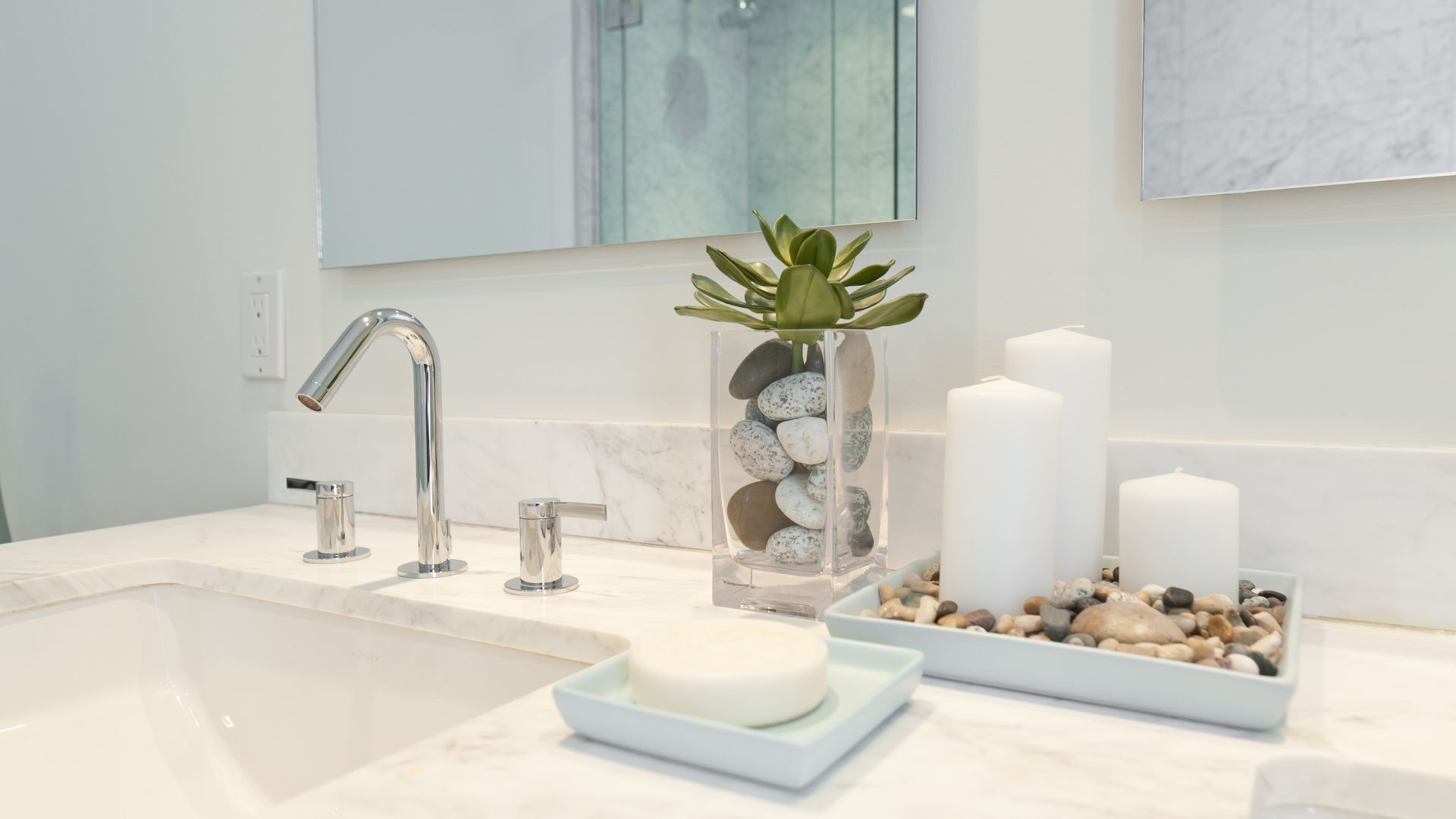
31 Jan, 2024
In the realm of interior design, the Victorian era stands as a timeless muse, infusing spaces with opulence and sophistication. When it comes to bathrooms, the Victorian aesthetic continues to captivate homeowners, offering a blend of classic elegance and modern functionality. In this blog, we'll explore the design trends that define Victoria bathrooms, providing a glimpse into how this style seamlessly marries tradition with contemporary flair. Intricate Tile Patterns: One of the hallmarks of Victorian design is the extensive use of ornate tile patterns. Bathrooms adorned with intricate mosaic or patterned tiles create a visual feast, transporting occupants to a bygone era. Popular choices include geometric patterns, floral motifs, and elaborate borders. A black-and-white color palette, reminiscent of classic Victorian style, adds a touch of drama while maintaining a timeless appeal. Clawfoot Bathtubs: No Victorian-inspired bathroom is complete without the iconic clawfoot bathtub. These freestanding tubs exude luxury and nostalgia, bringing a sense of indulgence to the space. While the original clawfoot tubs were cast iron, modern versions offer a variety of materials, including acrylic and copper, providing options that cater to both traditionalists and those seeking a contemporary twist. Rich, Earthy Colors: Victorian bathrooms often feature a rich, earthy color palette that exudes warmth and sophistication. Deep burgundies, forest greens, and navy blues serve as perfect backdrops for the intricate detailing found in fixtures and furnishings. Complementing these colors with gold or brass accents adds a regal touch, creating a harmonious blend of elegance and coziness. Pedestal Sinks with Ornate Details: The pedestal sink is a staple in Victorian bathrooms, offering a delicate and refined alternative to bulkier vanity units. Look for sinks with ornate detailing, such as floral engravings or intricate edges, to enhance the vintage aesthetic. This not only adds a touch of luxury but also emphasizes the attention to detail that defines Victorian design. Wainscoting and Beadboard Panels: To achieve an authentic Victorian look, consider incorporating wainscoting or beadboard panels into the bathroom design. These decorative wall treatments not only add texture and visual interest but also pay homage to the craftsmanship of the era. Painting these panels in a contrasting color to the upper walls creates a striking visual effect. Chandelier Lighting: Lighting fixtures play a crucial role in Victorian bathrooms, and a chandelier can be a show-stopping centerpiece. Opt for a design that complements the overall aesthetic – perhaps a crystal chandelier for a touch of glamour or a wrought-iron fixture for a more rustic appeal. Strategic placement of sconces around mirrors also enhances the overall lighting scheme. Vintage-Inspired Faucets and Fixtures: Pay attention to the smaller details by choosing faucets and fixtures that evoke a vintage charm. Cross-handled faucets, exposed shower pipes, and intricately designed towel bars contribute to the overall Victorian ambiance. Mixing and matching different finishes, such as chrome, brass, or oil-rubbed bronze, can add a layer of complexity to the design. Stained Glass Windows: If privacy allows, incorporating stained glass windows into the bathroom design can elevate the space to new heights. The vibrant colors and intricate patterns of stained glass not only evoke the Victorian era but also infuse the bathroom with a sense of artistry and individuality. In conclusion, designing a Victorian-inspired bathroom is a journey into a world where timeless elegance meets modern sensibility. By embracing intricate details, rich color palettes, and iconic fixtures, homeowners can create a retreat that transcends trends and offers a sanctuary of sophistication. Whether you're renovating an existing bathroom or starting from scratch, these design trends provide a roadmap to infuse your space with the regal charm of Victoria.
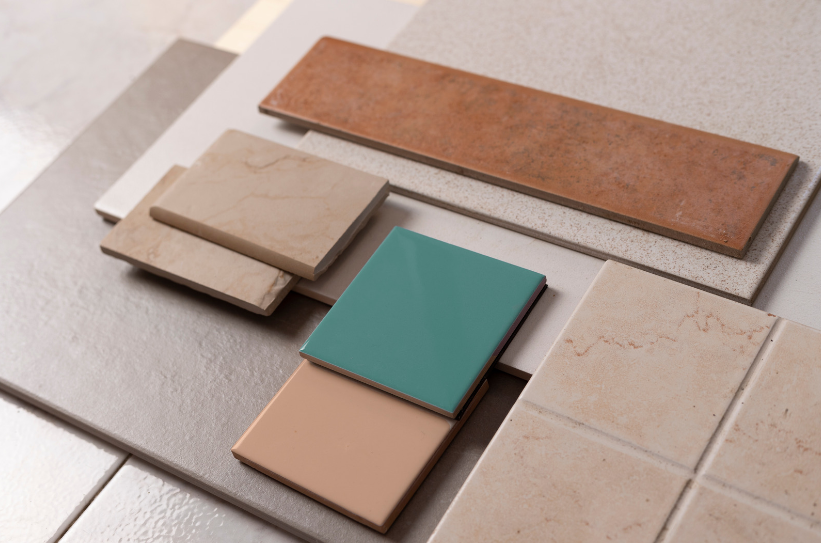
23 Jan, 2024
Nestled on the stunning coastline of British Columbia, Victoria is a city that boasts not only picturesque landscapes but also a unique coastal charm. If you are fortunate enough to call this coastal haven home, you understand the importance of selecting materials that can withstand the coastal climate while enhancing the beauty of your space. In this blog post, we'll give you a few traits to look for when choosing tiles for a coastal home in Victoria, BC, ensuring both durability and aesthetic appeal for your tile project. Resistance to Moisture: Living by the coast means exposure to high levels of humidity and occasional saltwater mist. Therefore, it's crucial to choose tiles that are resistant to moisture. Opt for materials like ceramic, porcelain, or natural stone, which are known for their ability to repel water. These tiles not only maintain their integrity in damp conditions but also prevent mold and mildew growth, ensuring a healthy indoor environment. Durable and Hardwearing: Coastal living often comes with its own set of challenges, including harsh weather conditions and the corrosive effects of salt in the air. Selecting tiles with durability in mind is essential. Porcelain tiles, in particular, are an excellent choice due to their robust nature. They can withstand heavy foot traffic, resist scratches, and maintain their beauty even in the face of challenging coastal elements. Non-Slip Surfaces: Safety is paramount, especially in areas that may be exposed to moisture. For spaces like bathrooms, kitchens, or outdoor patios, consider tiles with non-slip surfaces. Textured or matte finishes provide the necessary traction to help prevent slips and falls, creating a secure environment for you and your family. This feature is particularly important in coastal regions where wet conditions are common. Coastal Aesthetics: While functionality is key, coastal homes in Victoria also deserve tiles that complement the serene beauty of the surroundings. Opt for tiles that evoke a coastal aesthetic, such as those inspired by natural stone, seashells, or driftwood. Soft, neutral tones like sandy beige, cool blues, and muted greens can bring a touch of the ocean indoors, creating a harmonious and calming atmosphere. Easy Maintenance: Life by the coast should be about relaxation, not constant upkeep, so choose tiles that are easy to clean and maintain. Porcelain and ceramic tiles are known for their low-maintenance qualities, requiring only regular sweeping and occasional mopping to keep them looking pristine. This allows you to spend more time enjoying the coastal lifestyle and less time on household chores. Versatility in Design: Coastal homes often feature a blend of indoor and outdoor living spaces. Choose tiles that offer versatility in design, allowing for a seamless transition between different areas. Large-format tiles or tiles with a consistent design across various sizes can help create a cohesive and visually appealing flow throughout your home, connecting the indoor and outdoor spaces effortlessly. Choosing the perfect tiles for a coastal home in Victoria, BC is a delicate balance between functionality and aesthetics. Prioritize materials that can withstand the coastal climate while enhancing the natural beauty of your surroundings. From moisture resistance to coastal-inspired designs, the right tiles will not only endure the elements but also elevate the charm of your coastal abode, creating a space that reflects the unique spirit of Victoria's coastal living. Once you've chosen the perfect tiles, complete your renovation project with professional installation by our tiling experts!

19 Dec, 2023
Laminate flooring is one of the quicker and easier flooring types to install. If installed as a floating floor, you can even walk on it immediately after it is installed, decreasing the amount of time that your life is interrupted by your flooring project. But just how fast can it be installed? Like anything, the time it takes to install a laminate floor depends on several things: the skill of the installers, the number of corners, cabinets, and doorframes in the space, and the number of unforeseen circumstances that arise. The width of the laminate planks and the method by which they are attached also causes installation times to vary. As a rough estimate, a crew of flooring professionals can usually install about 1,000 square feet of laminate flooring in one day. This means that most residential flooring projects can be completed in two days at most. Laying laminate in a family room or in a couple bedrooms generally won’t take more than one day. Keep in mind, however, that this is just the time it takes to install the laminate. If the existing floor must be removed, this will add time to the overall project. Subfloors may need to be repaired, and if glue is used it will need time to dry before you walk on the floor. Installing laminate on stairs will also take a bit longer due to the number of measurements and cuts that must be made. If you choose to install your own laminate floors, the time required to complete the project will be entirely dependent on your skill. If you have construction experience, you might not be much slower than a professional. The average DIYer, however, can be expected to take at least twice as long as a professional to install laminate. Also remember that professionals usually work in teams of two to four people - if you are working alone, things will take much longer! If time is of the essence, we highly recommend employing a professional to install your laminate flooring. Not only will the job be completed much faster, it will also cause you less frustration and will be completed with fewer mistakes. At Bathroom Renovations Langley, our experience allows us to give you a fairly accurate time frame for your project before we begin. We take into account all of the variables given above while planning the project and do everything in our power to stick to the time frame we give you. Laminate flooring is generally a low-hassle flooring option, and this applies even to its installation. It is quite possible for you to leave for work in the morning with carpet and come home to laminate flooring in your bedroom! If you are considering installing laminate, don’t hesitate to reach out to us for a quote of both the cost and the time it will take to install. We guarantee you the quickest installation possible without sacrificing quality!
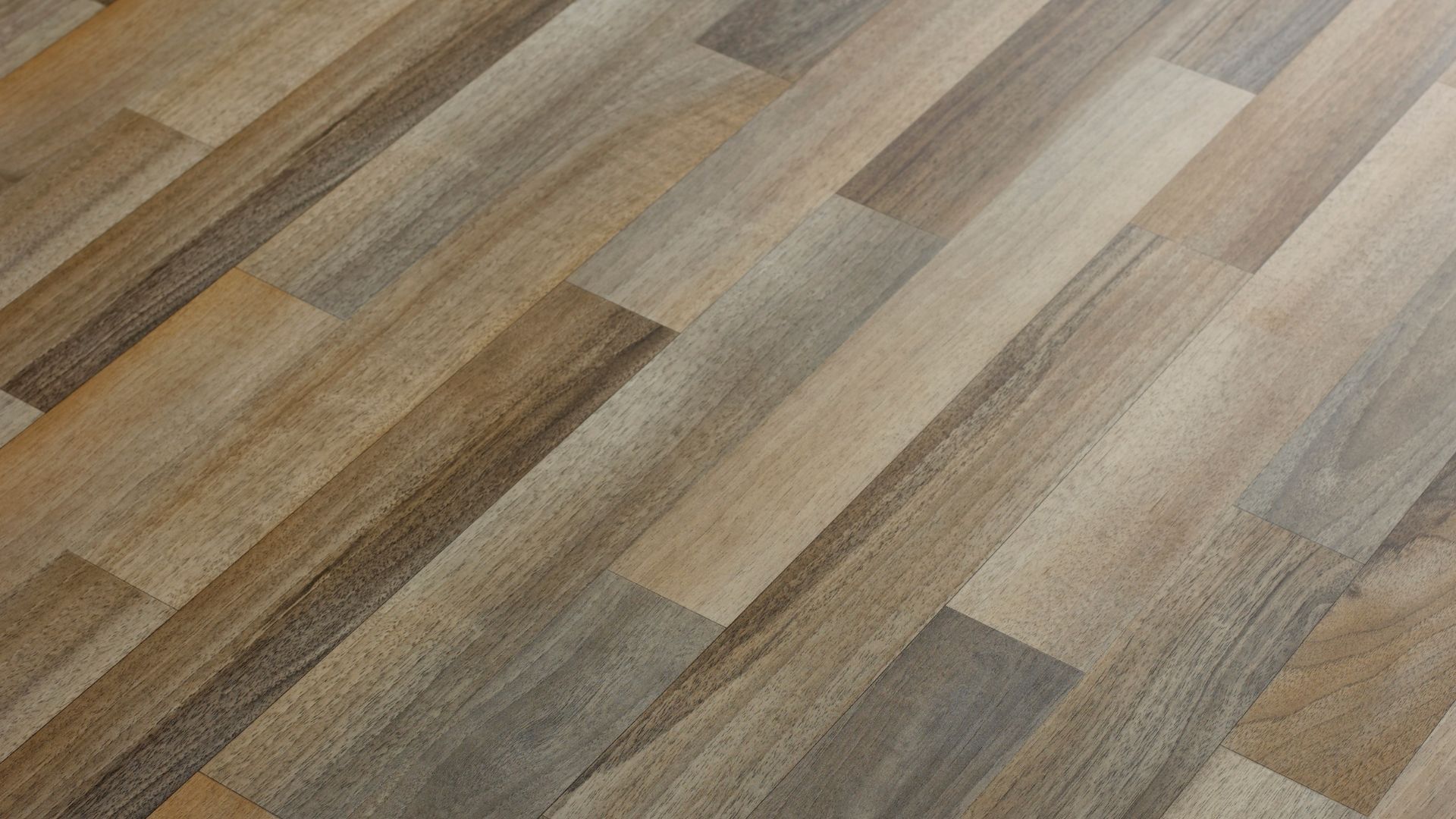
19 Dec, 2023
Laminate has become very popular over the last decade, and this surge in popularity has caused a huge increase in the types and styles of laminate that are available. If you are trying to select new flooring, the options available can be overwhelming! To help narrow down your choices, here are some of the main differences between different types of laminate. As for which is best, you’ll have to decide what matters most to you! Appearance While many home and business owners want their laminate floor to have a wood look, not everyone does. Laminate can also look like stone, tile, and marble. If you do want the wood look, you will need to decide how close you want the resemblance to be. Some laminates are even textured to feel like wood! Regardless of the look you want, deciding on a color family and style will narrow down your choices significantly. Water Resistance If you are installing laminate in a kitchen or bathroom, high water resistance is a must. Even if you are flooring a bedroom or living room, there are a number of reasons that water resistance might matter to you: small children tend to spill things, frequent entertaining can also lead to spills and stains, and a wet climate can bring excess moisture into your space on shoes and through open doors. Think carefully about how you will use the space before deciding how much moisture resistance you need from your floor! Durability You also need to consider how and how often the room you are flooring will be used. If you are installing laminate in a busy showroom, durability will likely be the most important feature for you; your choice of flooring for a guest bedroom that you rarely use can be based largely on appearance. The thickness of the planks is a great way to gauge durability, but the way the planks are finished and sealed can also have an impact. There are many independent parties who have tested the leading laminates for durability - if this is important to you, be sure to consider their findings before making your choice! Chemical Content Some flooring types have higher concentrations of toxins and VOCs (volatile organic compounds) than others. If you are flooring your child’s bedroom, this is likely to be a deciding factor. It might not matter as much in a well ventilated workshop. Laminates that have earned the FloorScore certification are made according to strict guidelines on chemical usage. If low VOC content is important to you, look for the FloorScore label. The best laminate flooring for you is the one that best meets your needs and desires for your space. Many laminates excel in more than one of these areas, so you don’t have to choose just one strength. We recommend ranking these factors in terms of importance, then comparing the laminates that satisfy at least your top two categories. If the number of options is still too large, don’t hesitate to give our expert designers a call for help!
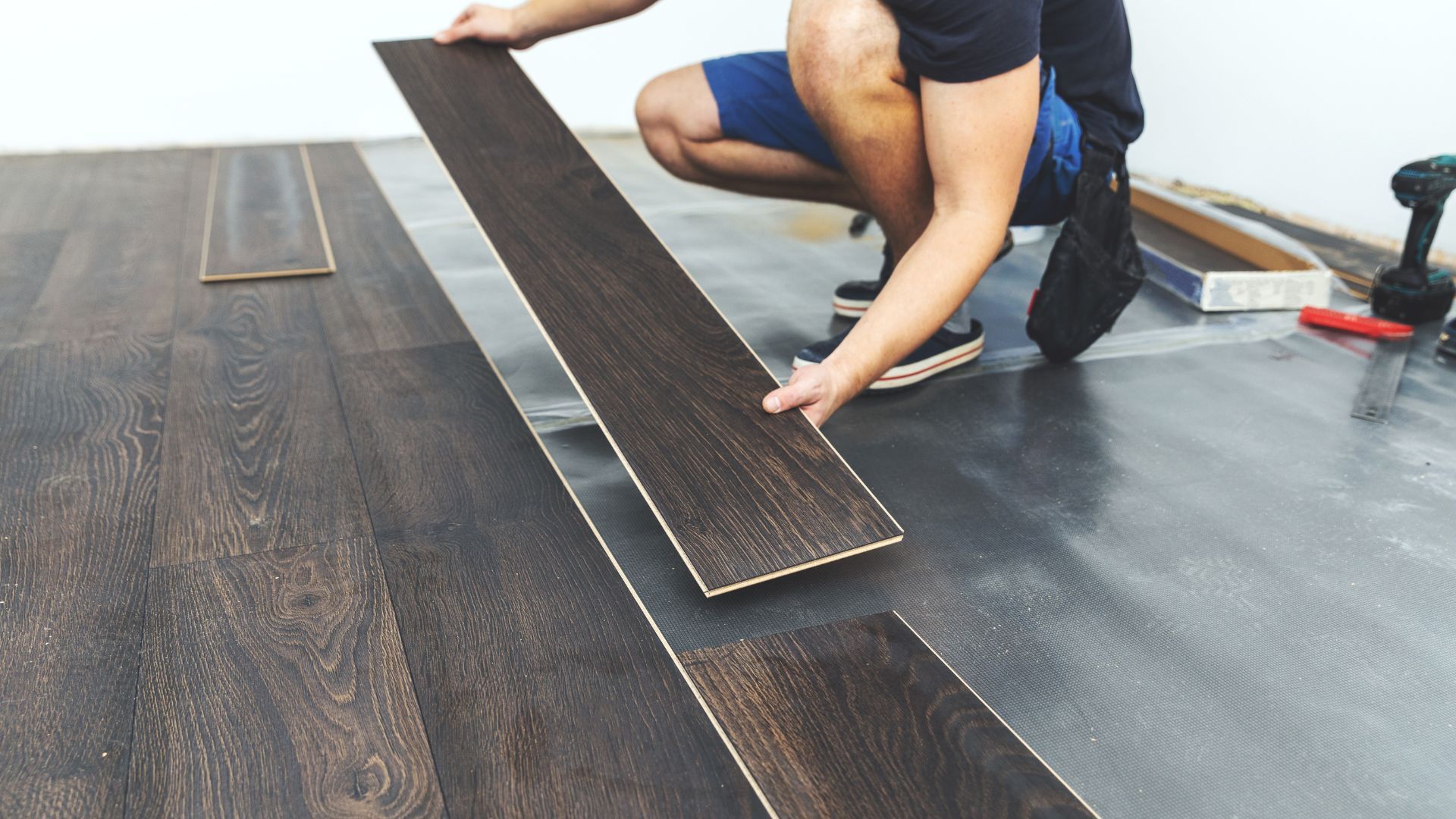
19 Dec, 2023
If you have ever compared prices on flooring, you know that hardwood is considerably more expensive than nearly any other type of flooring. You may also know that laminate is easy to maintain and can look very similar to hardwood. So you might be wondering why anyone would pay so much more for hardwood when they could save money and effort by installing laminate. Here are a couple reasons why hardwood might be worth the investment. First, hardwood beats every other flooring type in terms of longevity. You may have heard that laminate lasts as long as hardwood, but that is not entirely true. Laminate will generally last ten to fifteen years. Hardwood will also be starting to look worn and faded after ten years. Hardwood, however, can be refinished, making it look like new again and again. Laminate must be replaced. So while hardwood has a much higher initial cost, the cost of refinishing is much less than the replacement cost of laminate. If you plan on living in your home for the foreseeable future, hardwood is a much better long-term investment. Hardwood is also a better investment if you plan on selling your home in the near future. While homebuyers might prefer a laminate floor over carpet , laminate does not generally add value to your home. Hardwood flooring, on the other hand, will almost always make your home much more desirable and, therefore, more valuable. If you want an easy to maintain floor, laminate is a great choice. Hardwood is actually not any more difficult to maintain than laminate, however. Unlike the hardwood floors that were common a couple centuries ago, modern hardwood does not need to be waxed or polished. It can be swept, vacuumed, or dust mopped just like laminate. Perhaps the most important difference between laminate and hardwood, however, is the way it looks. While modern laminate has come a long way in terms of appearance (some laminate is even textured to mimic the feel of hardwood), it cannot truly replicate hardwood. Because hardwood is made from natural wood, it has subtle differences in every plank. No factory can replicate what nature does so well! Some laminate manufacturers might tell you that “no one will even notice the difference”, but that is simply not true. Not only are laminate planks generally wider (four to six inches wide instead of one and a half to two inches wide), but the texture, the natural wood grains, and even the way hardwood feels under your feet are not something that can be reproduced by a machine. You might fool someone with laminate at first glance, but anyone who looks closely at your floor will know the difference. So is hardwood really worth the extra cost? That depends on what is important to you. If you are looking for an affordable and durable floor, there is nothing wrong with laminate. If longevity, beauty, and prestige are important to you, however, there is no better flooring than hardwood!
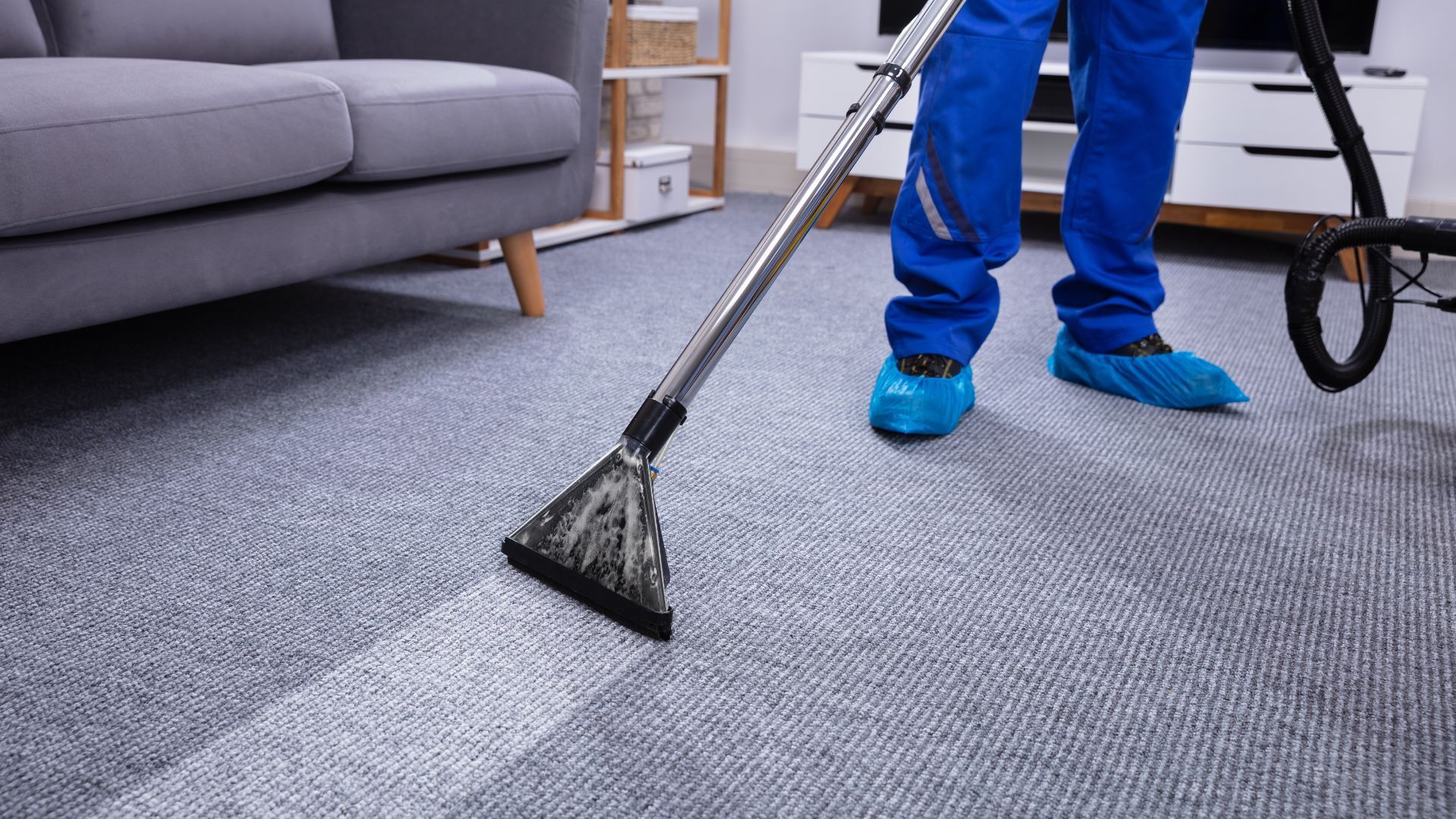
13 Jul, 2023
If you rent your home or business, it can sometimes be difficult to determine whose responsibility certain maintenance tasks are. You don’t own the property, so it is easy to make a case that it is the landlord’s responsibility to maintain it. Your landlord didn’t dirty the carpet, however - you did. So when is it your job to pay for carpet cleaning, and when is it your landlord’s? Unfortunately there is no clear, easy answer to this question. Some rental contracts will provide clear guidance on maintenance issues, so reading through your contract might give you some insight. If your contract is vague or silent on the issue, here are a few guidelines that might help you determine responsibility. One situation in which carpet cleaning is clearly the landlord’s responsibility is when you have not yet moved into the property. If, during your pre-move in walk-through, you notice that the carpet is dirty, you can absolutely request that it be cleaned (at the landlord’s expense) before you move in. Another situation in which a landlord might pay for carpet cleaning is if major repairs (that were not your fault) require contractors to work inside the property. If these contractors left the carpet muddy, stained, or just filthy, you can request that the carpet be cleaned after the work is complete. Your landlord might even be able to ask the contractor to pay for this cleaning, making them much more likely to help you clean up the mess. Aside from rare situations like this, carpet cleaning after you move in is generally viewed as routine maintenance and is therefore the responsibility of the tenant. You don’t expect your landlord to vacuum your floors or clean your bathrooms, so it is reasonable to expect to provide your own carpet cleaning as well. So while many landlords will not pay for carpet cleaning on request, there are some who include regular maintenance services in their contracts. To these landlords, it is worth the extra expense to ensure that their properties are well maintained and that their tenants are happy. If services like carpet cleaning are important to you, be sure to ask if they are provided when searching for a property to rent. It also never hurts to ask your landlord! If you have been a great tenant, a good landlord might be willing to pay for carpet cleaning to maintain a good relationship with you and keep you as their tenant. Just be aware when you ask that they have every right to say “no”. Even if your landlord will not pay for carpet cleaning, there is still good news. Since carpet cleaning is generally viewed as routine maintenance, you as the tenant also have every right to have it done at your own expense. You don’t usually need your landlord’s permission to hire a professional carpet cleaner - in fact, most landlords will be grateful that you took such great care of their property!
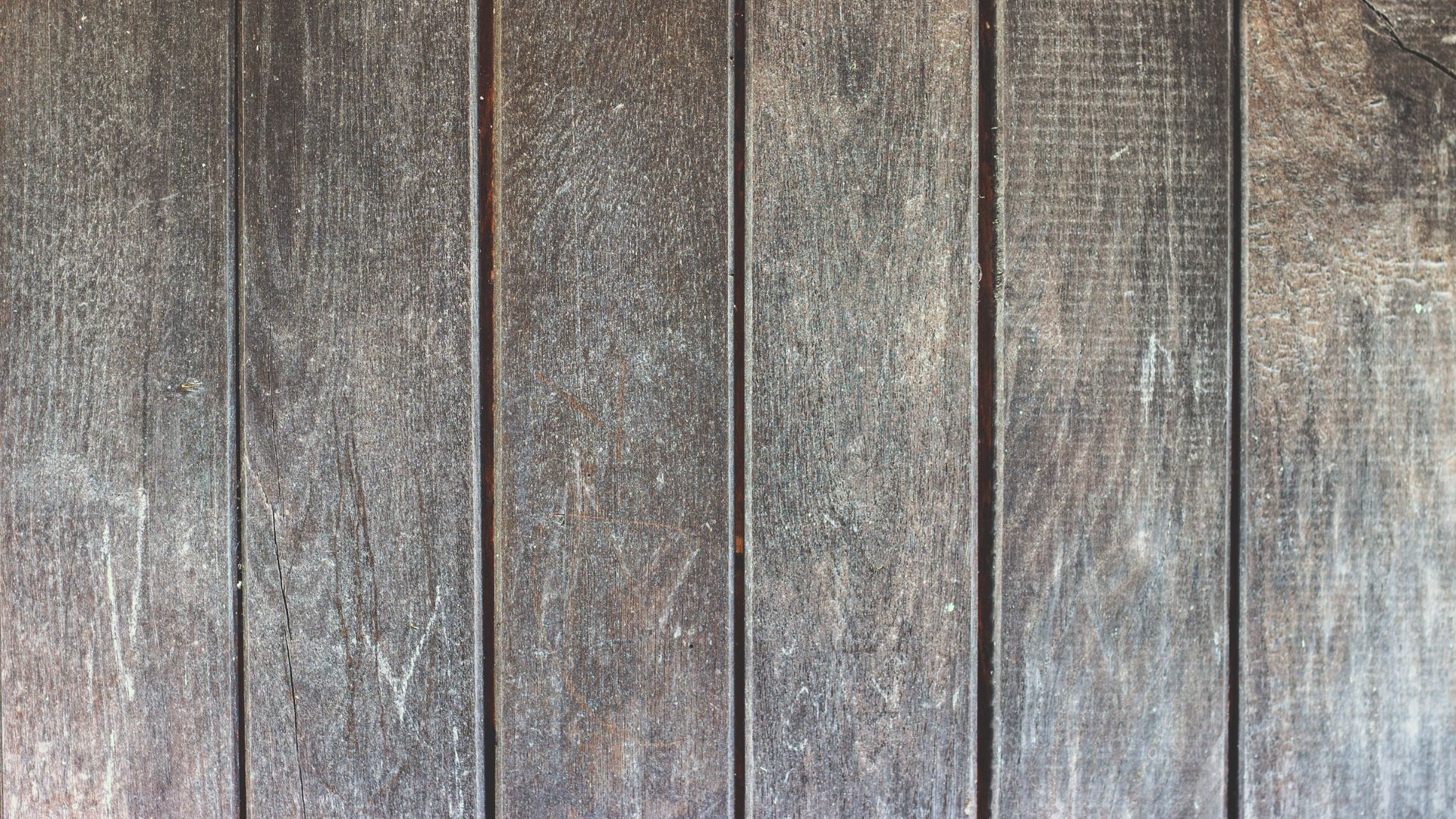
13 Jul, 2023
Perhaps you want a one-of-a-kind floor. Perhaps you want to help the environment by using recycled wood. Perhaps you are just trying to save a little money. Or maybe you are wondering about using the wood from pallets as flooring for all three reasons! Whatever your motivation, the answer is that yes, pallet wood can be used to create a sturdy, unique floor - if you are willing to put in the time and effort to do it right. The first step for a successful pallet floor is choosing and collecting the right pallets. If you are using pallets that have been discarded by shippers or large retail stores, collecting enough pallets for your floor is probably going to take some time. One standard size pallet generally only provides enough wood for two square feet of flooring! You also need to be selective in which pallets you use. Do not floor your home with pallets that have been damaged by moisture, insects, chemical spills, or whose wood is split and splintered. Also avoid pallets with the processing code “MB” stamped on them - the chemical (methyl bromide) used to treat these pallets is toxic! Once you bring a pallet home, it will need to be cleaned, disassembled, sanded, and cleaned again. Examine the planks closely as you carefully take each pallet apart - you may have overlooked a hidden chemical stain or insect nest when you selected the pallet. After a good deal of pallet hunting, you will eventually have enough good planks to begin installing your new floor. Decide how you want to arrange your planks, then lay them out to see how the color variations look together. Take your time on this step - you want to be sure you love the look before you nail the planks to your floor! Once you decide on a design, you are finally ready to install your floor! Be sure your current flooring or subfloor is suitable for nailing planks to - you will need to remove existing carpet or tile floors and will need to install plywood over concrete subfloors. Once the subfloor is prepared, choose a corner and start nailing down your planks. Be sure to leave a small gap around the edge of the room for expansion! Whether or not you stain your new floor is entirely up to you. Unstained pallet planks will give your room an authentic rustic look; staining your floor will make it look more uniform while maintaining some of its rustic charm. Whatever you decide about stain, we highly recommend sealing your new floor to help prevent stains and increase its lifespan. So while pallet wood floors are absolutely possible, they require a huge time investment. They can also save you a good deal of money, help the planet by reducing waste, and give you a truly unique floor. You also don’t have to do the entire project alone - while we can’t help you source pallets, we would be happy to instal l, stain, and seal your new pallet wood floor!
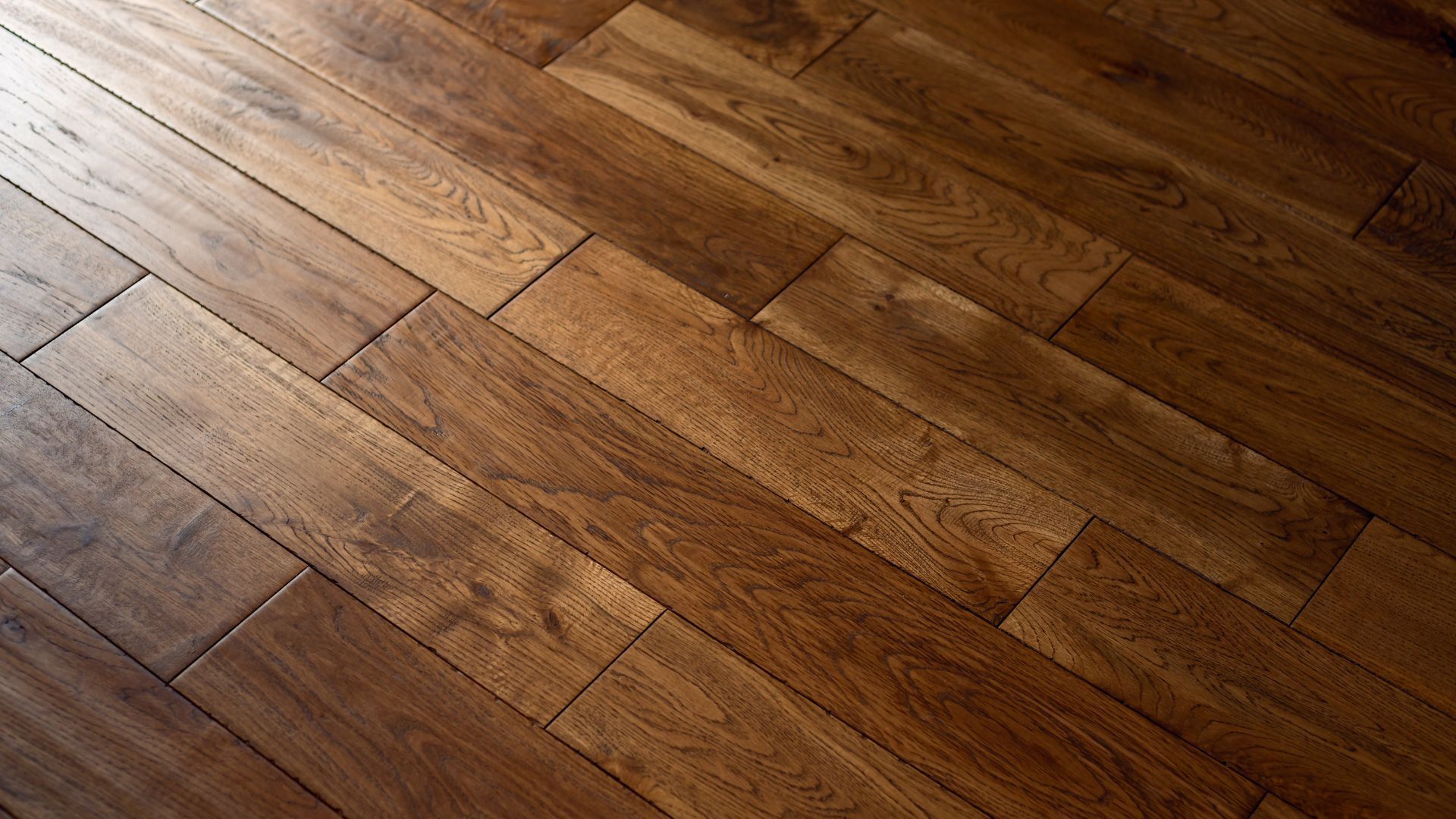
13 Jul, 2023
If you have an unfinished basement that you want to turn into an elegant living space, you may have considered installing solid hardwood flooring. While it will give the space a classic, refined look, there are many reasons why solid wood flooring is not a good choice for your basement. Basements are notorious for high humidity and large temperature fluctuations. Since solid wood flooring is easily damaged by such conditions, we do not recommend installing it in your basement. Solid wood floors can swell, buckle, and crack with even moderate amounts of humidity; if water pools in your basement after a heavy rain, your floor is likely to be ruined. Even if there is no standing water in your basement, water from the ground gradually seeps into nearly every basement. This will slowly but surely rot your hardwood floor. If your water heater is in your basement, a leak or system failure could also destroy your floor. So are you stuck with an ugly concrete floor in your basement? Not at all! Vinyl and tile floors are great basement flooring options due to their high moisture resistance. If you really want the look of solid wood, you still have a couple of options. Modern laminate flooring can be manufactured to look just like solid hardwood. While laminate is much more moisture resistant than solid wood, we still recommend adding a moisture barrier underneath it. This is generally done by installing waterproof plastic sheeting below the flooring. Since laminate is often installed as a floating floor, it lends itself well to even a thick moisture resistant underlay. You can also install radiant heating underneath a laminate floor so that your basement will be nice and cozy on even the coldest winter nights! If you want to get as close to solid wood flooring as possible, some engineered wood floors are also suitable for basements. Because engineered wood planks are made from perpendicular layers of wood, they are much more resistant to warping and cracking than solid hardwood. The solid wood veneer is also only on the top layer, meaning that the lower layers (made of high density fibers, much like laminate flooring) are much more moisture resistant than the top layer. A moisture resistant underlay is also recommended to protect your flooring as much as possible. Although basements present unique flooring challenges, there is nothing stopping you from achieving exactly the look and feel you want in your basement. Laminate and engineered wood floors can give your basement a luxurious appearance while minimizing the risk of water damage. If you plan on using the space as a home gym or a teenager hangout area, tile or even custom rubber flooring might be an even better option. Whatever type of flooring you decide to use in your basement, call us to ensure that the proper precautions are taken during installation. With professional installation, most flooring types can last just as long below ground as they do above ground!
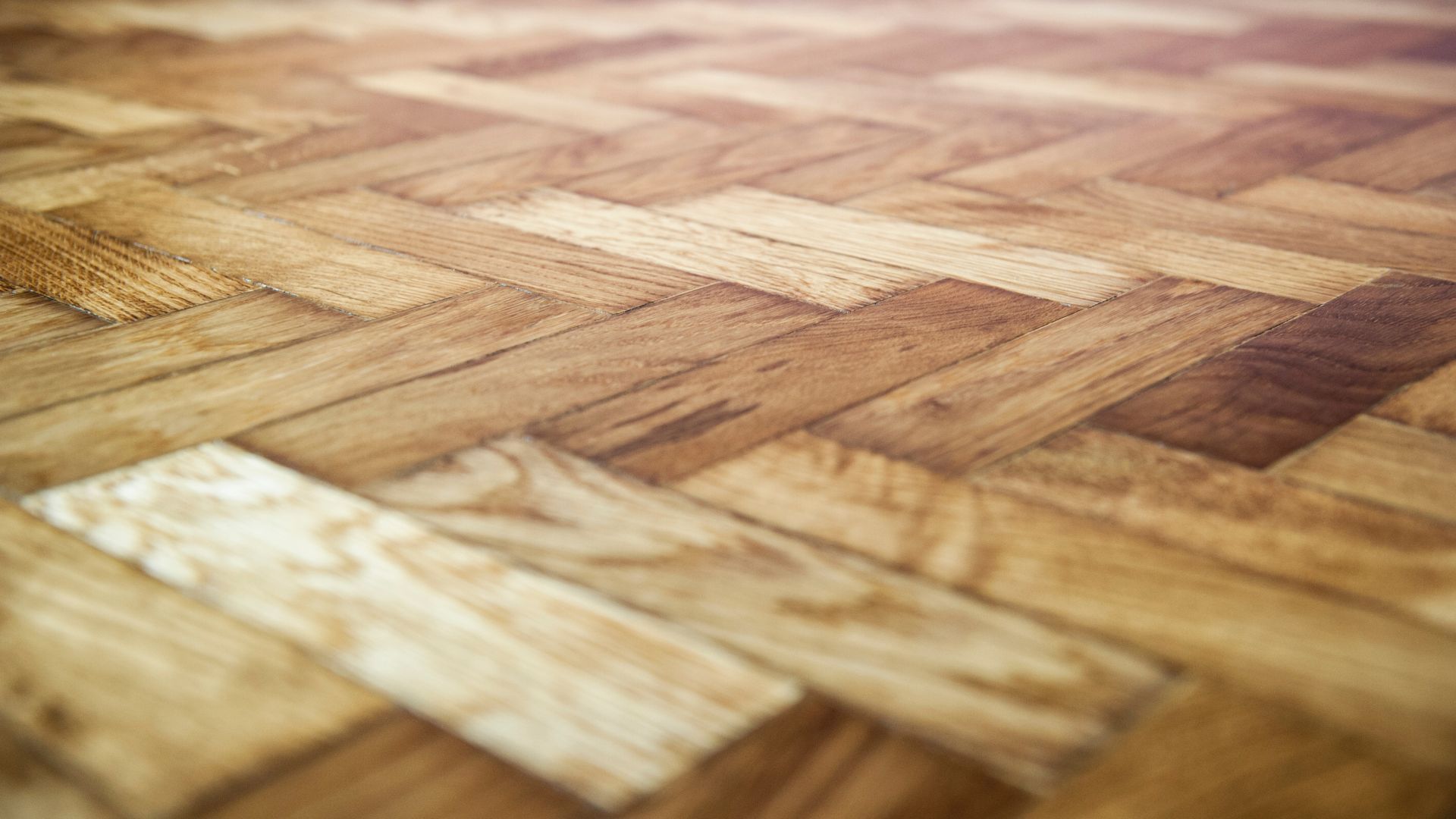
12 Jul, 2023
If you have an unfinished basement that you want to turn into an elegant living space, you may have considered installing solid hardwood flooring. While it will give the space a classic, refined look, there are many reasons why solid wood flooring is not a good choice for your basement. Basements are notorious for high humidity and large temperature fluctuations. Since solid wood flooring is easily damaged by such conditions, we do not recommend installing it in your basement. Solid wood floors can swell, buckle, and crack with even moderate amounts of humidity; if water pools in your basement after a heavy rain, your floor is likely to be ruined. Even if there is no standing water in your basement, water from the ground gradually seeps into nearly every basement. This will slowly but surely rot your hardwood floor. If your water heater is in your basement, a leak or system failure could also destroy your floor. So are you stuck with an ugly concrete floor in your basement? Not at all! Vinyl and tile floors are great basement flooring options due to their high moisture resistance. If you really want the look of solid wood, you still have a couple of options. Modern laminate flooring can be manufactured to look just like solid hardwood. While laminate is much more moisture resistant than solid wood, we still recommend adding a moisture barrier underneath it. This is generally done by installing waterproof plastic sheeting below the flooring. Since laminate is often installed as a floating floor, it lends itself well to even a thick moisture resistant underlay. You can also install radiant heating underneath a laminate floor so that your basement will be nice and cozy on even the coldest winter nights! If you want to get as close to solid wood flooring as possible, some engineered wood floors are also suitable for basements. Because engineered wood planks are made from perpendicular layers of wood, they are much more resistant to warping and cracking than solid hardwood. The solid wood veneer is also only on the top layer, meaning that the lower layers (made of high density fibers, much like laminate flooring) are much more moisture resistant than the top layer. A moisture resistant underlay is also recommended to protect your flooring as much as possible. Although basements present unique flooring challenges, there is nothing stopping you from achieving exactly the look and feel you want in your basement. Laminate and engineered wood floors can give your basement a luxurious appearance while minimizing the risk of water damage. If you plan on using the space as a home gym or a teenager hangout area, tile or even custom rubber flooring might be an even better option. Whatever type of flooring you decide to use in your basement, call us to ensure that the proper precautions are taken during installation. With professional installation, most flooring types can last just as long below ground as they do above ground!
SERVICE AREA
Contact Us
- Mon - Fri
- -
- Sat - Sun
- -
